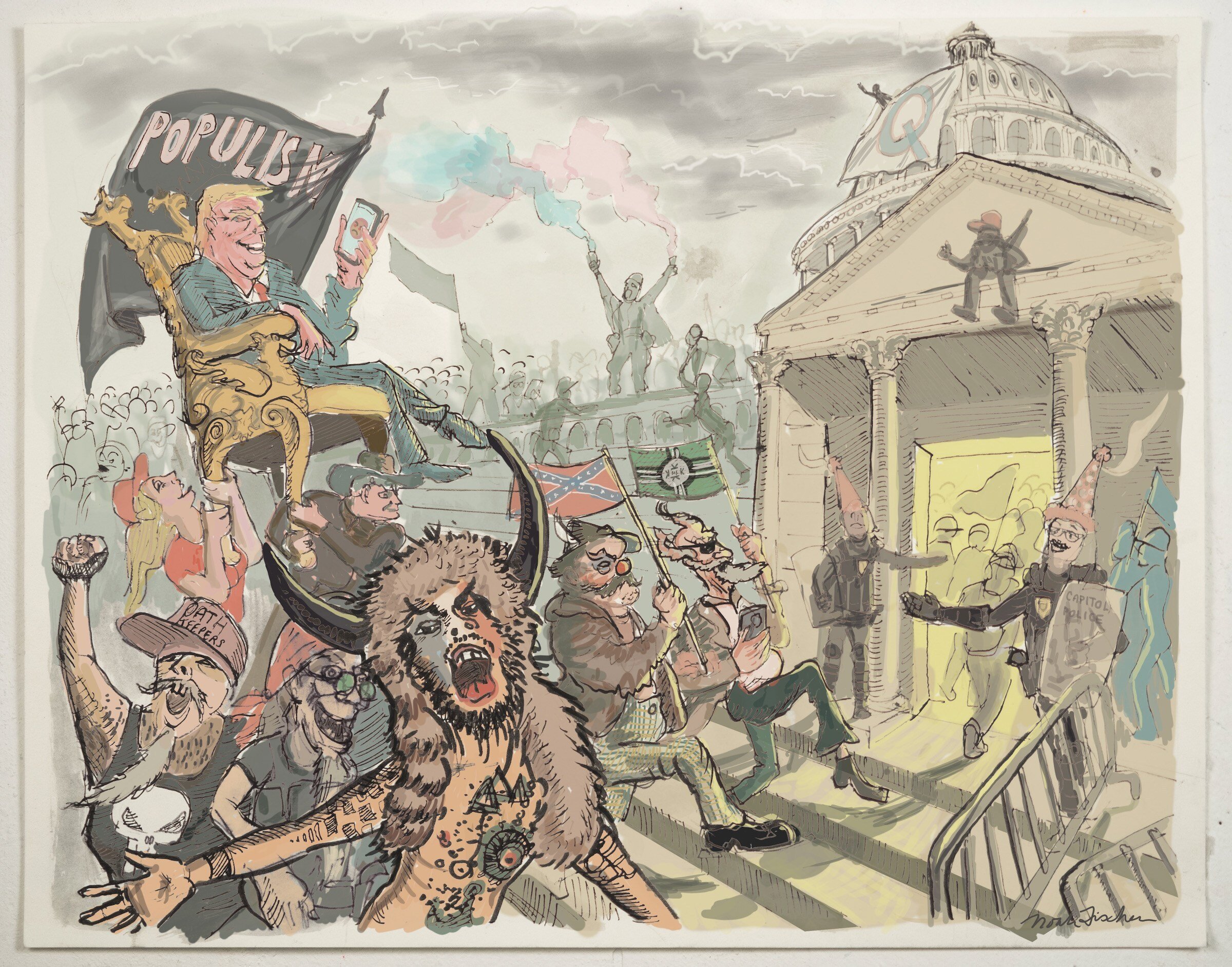Lately, I’ve been having dreams where the pandemic is a reality. This was an idea that I shared with a group of my film history students this past week in our synchronous Zoom discussion as we talked about the role of dreaming and fantasy in early motion pictures. We were discussing Charlie Chaplin’s The Kid, an iconic silent film that I often teach in the early weeks of my Intro to Film Studies course, and I had posed a question about why Chaplin may have interrupted the narrative of his film with a sequence where the main character enters a fantastical dreamland state only to have the dream “ruined” in the end with the reality of his actual life creeping in.
There are many plausible explanations about why Chaplin may have added this “dream interrupted” scene—a scene which mostly confused audiences at the time and easily could have been omitted and allowed for a still excellent film (see video clip below). But the primary reason had to do with Chaplin’s understanding of cinema’s power to hold a mirror up to our world. Chaplin firmly believed that cinema was more than just a medium of entertainment, and he took many of his cues from avant-garde filmmakers who routinely made it their business to disrupt and disturb tidy narratives like the “Hollywood ending.” This was the point where I shared how my own dreams had only recently been punctured by the reality of mask-wearing, social distancing, and the omnipresence of the pandemic. Has this happened to you yet?
My dreams for the most part were still blissfully removed from Covid-19 even a few weeks ago. But the inevitable reality that we are now all living finally crept in, just as Chaplin’s “dream interrupted” scene in The Kid. Interestingly, if you look now at the majority of the film and television shows we are watching—worlds without the pandemic and all it has wrought—there is a compelling idea left here to explore. At some point, we will have more and more filmmakers and television showrunners include the pandemic reality into their fictionalized worlds. Whether this reality is included or not will likely turn on questions of disrupting the expectations of viewers to escape that reality in their own lives. We discussed as a group a handful of television shows in particular that have already adapted to this new normal (i.e. This Is Us, The Connors, The Good Doctor, and South Park) and talked about reasons some creatives would choose to include or exclude the pandemic narrative from future films and television shows.
Coincidentally, Charlie Chaplin’s The Kid debuted exactly one hundred years ago this past week, on January 21, 1921 at New York City’s Carnegie Hall. This was also precisely the moment when Dadaism in art and cinema was flourishing in avant-garde circles both in New York and Paris. Francis Picabia – my feature artist this week celebrating a birthday on January 22nd—created L’oeil cacodylate (The Cacodylic Eye) also in 1921 as a challenge to the expectations of the traditional group portrait medium (see image in my post header and read more about the work here). And while I am not suggesting that Chaplin was a Dadaist or intended his film to be avant-garde, what we do know is that Chaplin was paying attention to the kinds of questions raised by the artistic avant-garde as they challenged what an art object could be, and what it could arouse, disrupt, and reflect for audiences. It remains to be seen how our 2020-21 moment will be represented by future filmmakers.
A few more things before the round up:
All of those Bernie Sander memes following the inauguration of Joe Biden and Kamala Harris were incredibly creative and very art historically based. I could not get enough of them, and I recommend visiting art critic Jerry Saltz’s Instagram page for one of the best collections from this past week. For the record, my two favourites were Bernie inserted into Joseph Kosuth’s One and Three Chairs (for all the obvious semiotic fun) and the knitted Bernie (because I am still a new knitter and very impressed at how well made it is!)
I was incredibly let down by the latest Wonder Woman film that opened on Christmas Day last month. I should have paid attention to the reviews, but I am a huge Kristen Wig fan and wanted to watch one of these superhero genre films with more of an open mind. And so I was pretty reluctant to get sucked into paying another $25 for a newly released Hollywood film so quickly again, but I was hearing all the best things about Promising Young Woman and did not want it fully spoiled for me. What can I say? I absolutely loved this movie, and for reasons both at the level of critical form (cinematography and sound design) and narrative. And ironically enough, it turned out to be the “Wonder Woman” film that I was actually looking for. Go see it, and after you do, listen to the many wonderful podcast reviews (like the one I am linking below) to unpack the real brilliance of this film.













